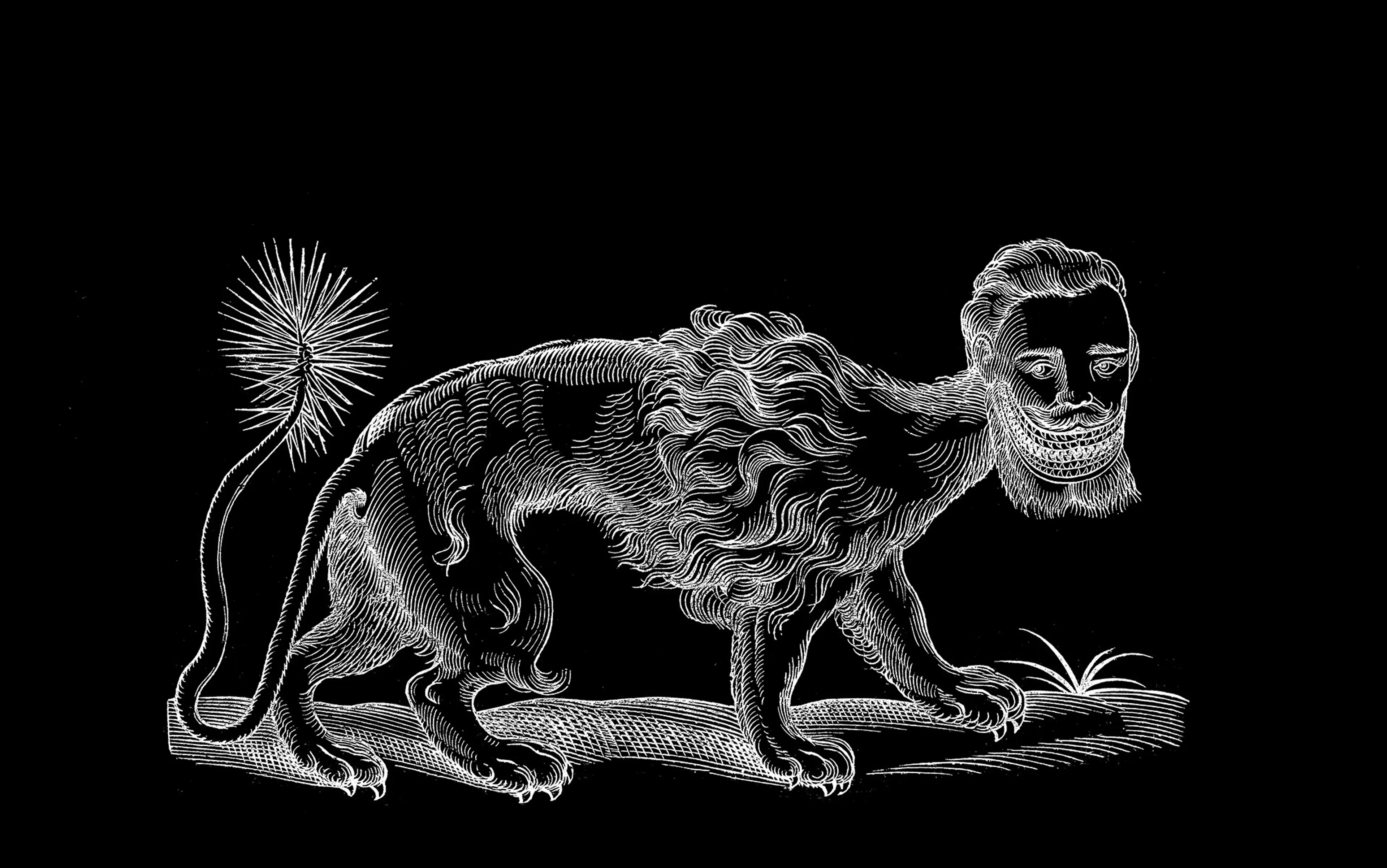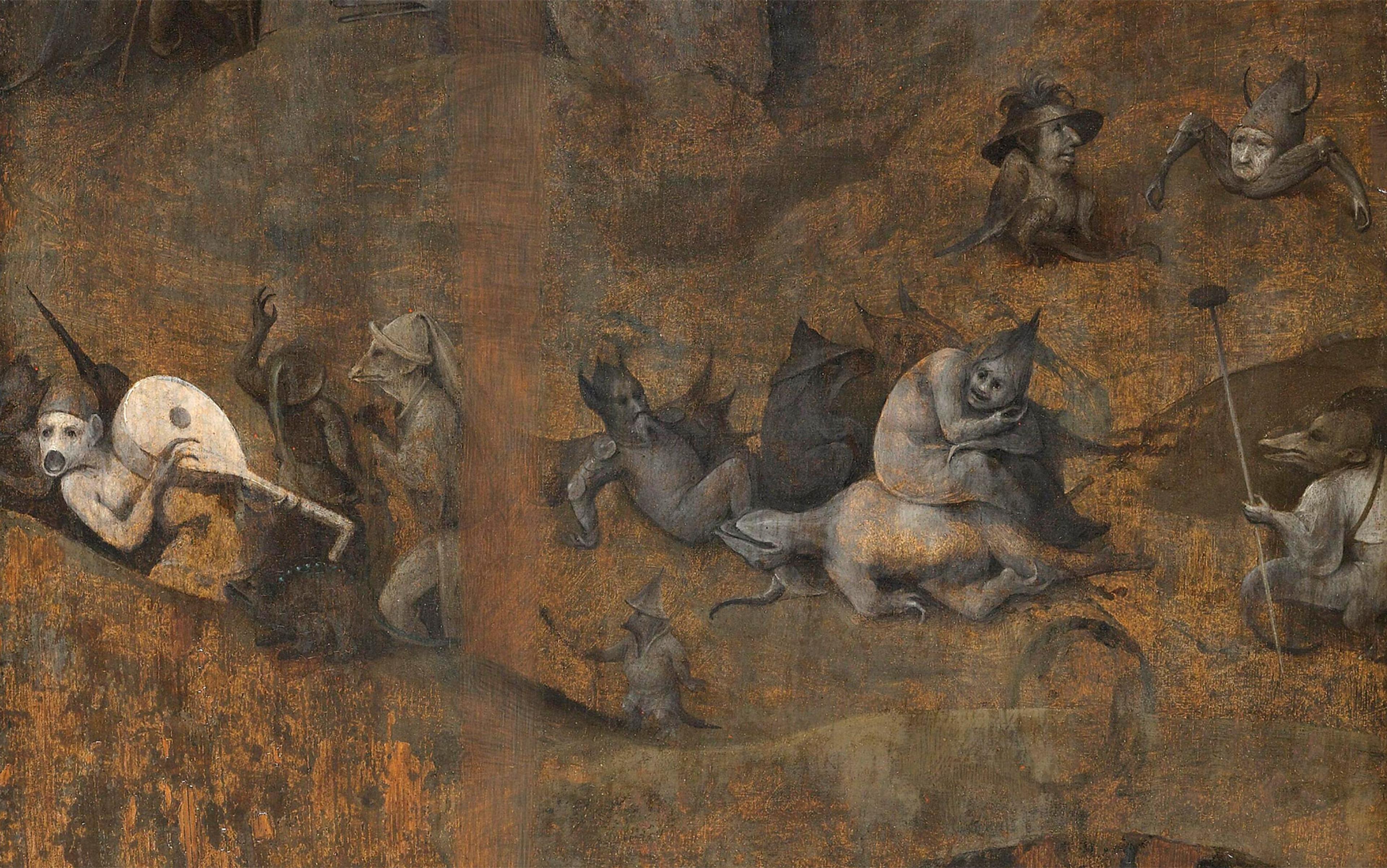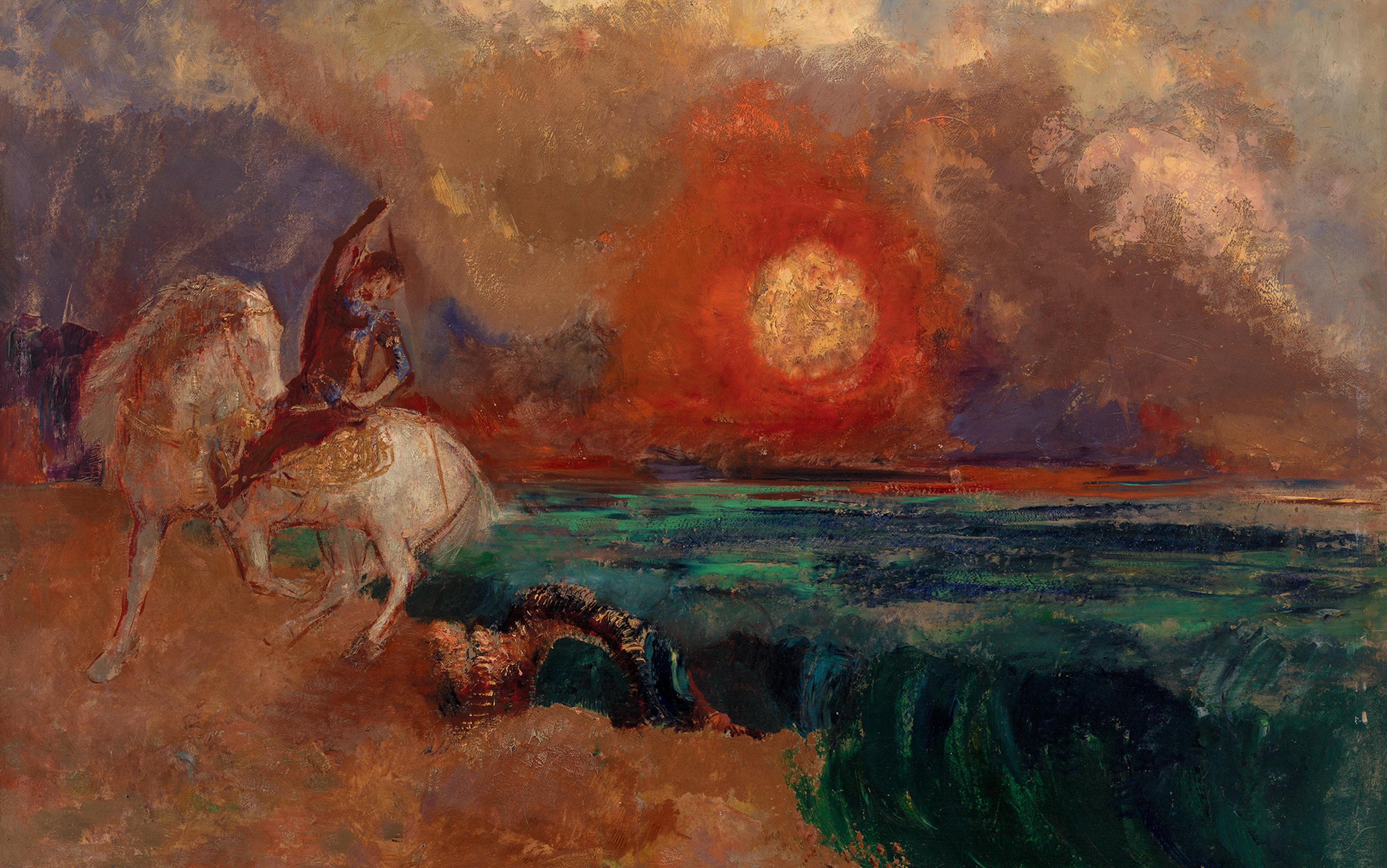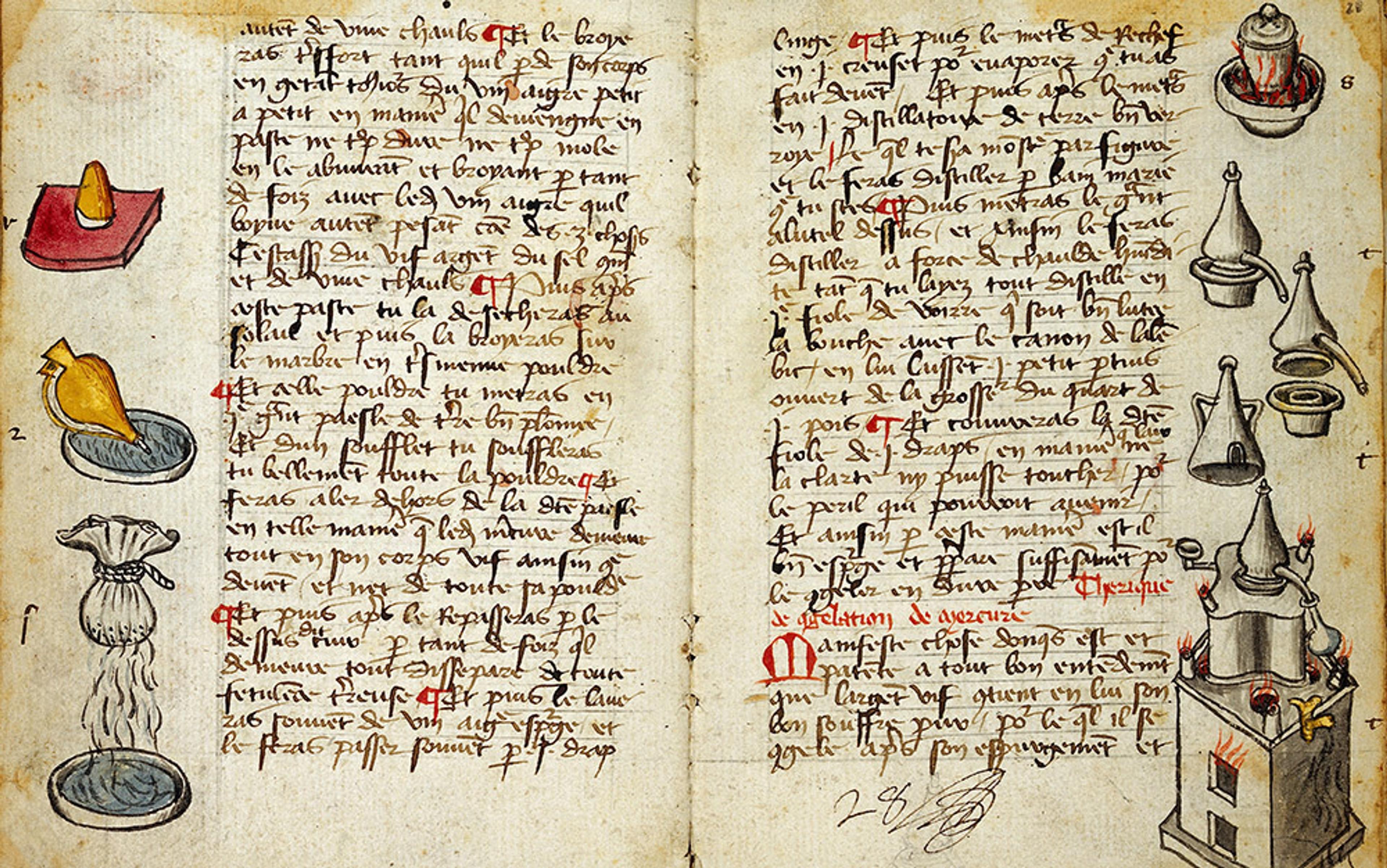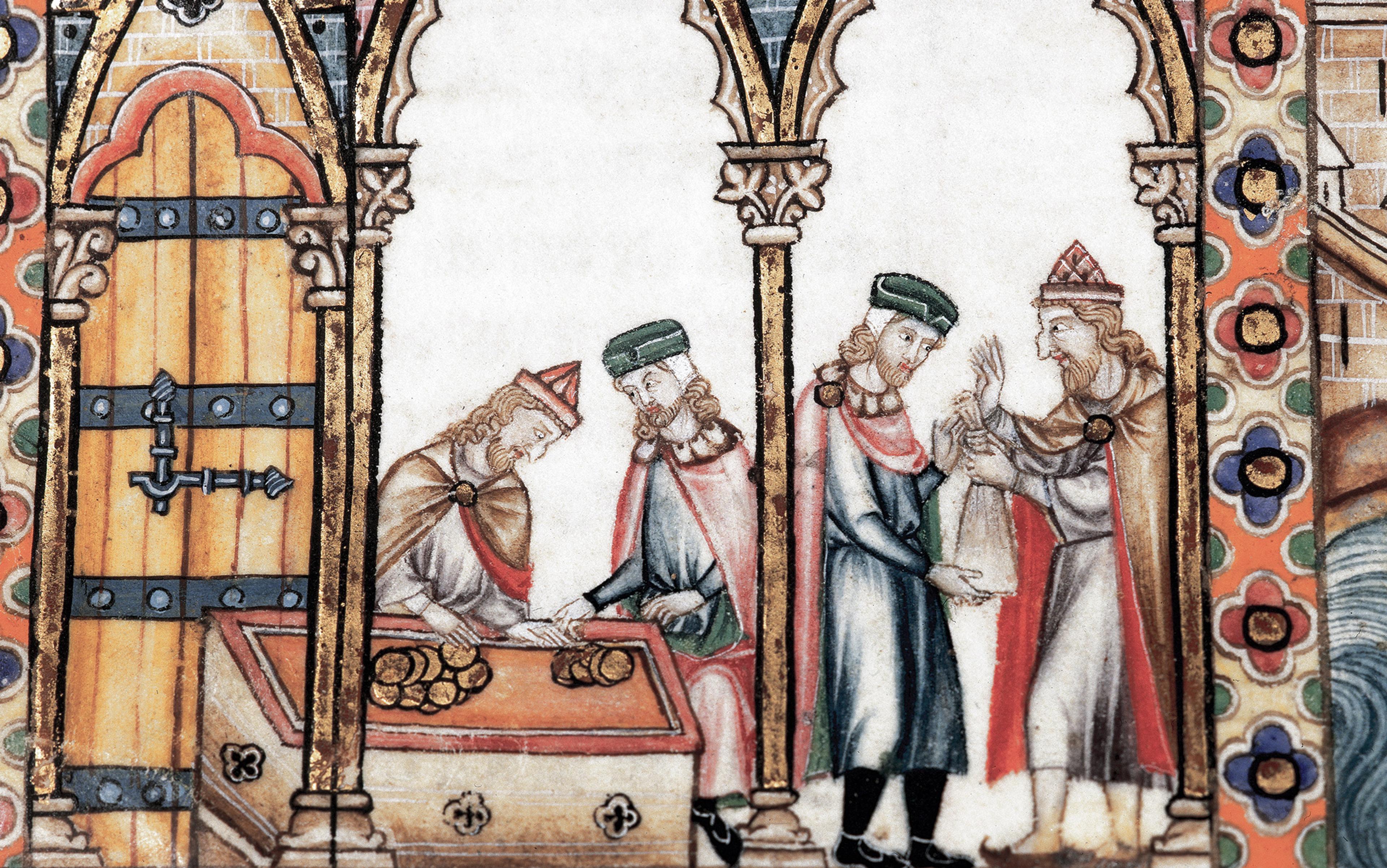Margaretha Hönin had a bad reputation. Even though she lived in the late 16th century, we know that her neighbours, the people of Coburg in Thuringia, despised her for being a parvenu and a money-grabbing miser. Hönin was also said to be a witch who met regularly with a dragon. For her neighbours, her economic behaviour was clearly linked to the visits from the dragon. But today, the connection between her miserliness and her witchcraft is obscure. Why was the link so obvious to her contemporaries? What was the relationship between economic behaviour and accusations of witchcraft?
It makes sense to focus on Germany when we talk about witches. Conditions for witch trials were, unfortunately, very good in large parts of the Holy Roman Empire. The country consisted of hundreds of principalities, and most of these could pass their own criminal laws. They had their own criminal courts, many staffed by incompetent lay judges who were nevertheless empowered to use torture. About half of all the people executed for witchcraft in the early modern period came from Germany.
When investigating witchcraft, one needs to differentiate between real and imaginary magic in the early modern period. If we want to understand the connection between the imaginary magic of the witches and economic behaviour, we need to deal with the connection between the economy and the real magic practised by ‘common’ people. In pre-industrial Europe, magic was a part of everyday life, very much like religion. People didn’t just believe in the efficacy of magic, they actively tried to use magic themselves. Simple forms of divination and healing magic were common, as was magic related to agriculture. The peasant household used divination to find out if the time was right for certain agricultural activities. Charms were supposed to keep the livestock in good health. Urban artisans and merchants also used economic magic to increase their wealth. Of course, the shadow economy of gambling and lotteries was obsessed with magic well into the 20th century.
Of all the forms of magic, magical treasure-hunting had the greatest economic significance. Treasure hunters drew on a vast magical arsenal. They had spell books of any description, divining rods available in any kind of wood, amulets to protect them against evil spirits, and lead tablets etched with magical signs. Most treasures were thought to be watched over by some kind of spirit, and treasure hunters tried hard to come into contact with these. To the utter horror of the ecclesiastical authorities, they invoked angels and saints. Treasure hunters talked to ghosts. Some of them even tried to conjure up demons.
Another magical strategy for finding treasure (used in 17th century Swabia) was to write down mysterious characters on parchment, and leave it on the ground where the treasure was thought to be: if it erupted in flames, the hunter had found his riches. When the place where the treasure was buried had been located, the wizard would draw on the ground with a sword magical circles adorned with magical symbols. He then put birch twigs on the edge of the circle, apparently a new addition to the magical routine meant to strengthen the circle. After that, he said a lengthy conjuration in a foreign language that he read from a bit of paper, apparently an excerpt from a spell book. Only then was digging allowed to begin – and always in strictest silence.
Treasure hunting came close to being a magical mass movement. There were thousands of treasure hunters in early modern Europe and almost all of them tried to use magic. However, only a tiny minority was ever accused of witchcraft. As a rule, treasure hunters simply had to pay a fine or do some penal labour for a couple of days. Common people simply didn’t see treasure magic as witchcraft, and most of the judges agreed. It’s telling that the strictest law ever enacted against treasure hunting, Henry VIII’s so-called Witchcraft Act of 1542, was quickly abolished and doesn’t seem to have had much of an impact on the local level, at least as far as treasure magicians were concerned.
Separate from these real forms of magic, there was the imaginary magic of the witches. Nobody was ever (or could ever be) guilty of witchcraft in the full sense of the word, which was defined by the late Middle Ages as a crime that consisted of five elements: a pact with the devil; sexual intercourse with demons; the magical flight (on a broomstick or a similar device); the witches’ dance (often referred to by the antisemitic term ‘witches’ sabbath’); and malevolent magic. Early modern Europe and Britain treated witchcraft as a capital crime.
At first glance, the relation between the economy and the imaginary magic of the witches seems to be entirely negative. Witches were often accused of attacking livestock. They magically made frost, storm and hail, and thereby caused crop failure. Indeed, their weather magic was said to endanger the economy of entire regions. Still, at least in the majority of the witch trials on the European continent, the witches didn’t profit from their magic. Weather magic especially looked like a strange form of auto-aggression because the hailstorms the witches supposedly conjured up damaged their own fields as well. As a rule, the pact with the devil as it appears in trial records was not a contract like that of Goethe’s Faust, which was mostly about the wishes of the magician. Rather, it stated simply that the witch submitted to the will of the demon. She did what a demon told her and became the instrument of the demon’s abyssal hatred of all creation. Witchcraft was mostly about destruction for destruction’s sake, not about the personal interests and wishes of the witches, let alone their economic advantage.
However, there were exceptions. When Martin Luther wrote a short survey of economic magic, he began the discussion with a reference to ‘the brides of the dragon’ (‘Drachenbräute’). At first glance, this might seem like an allusion to the Biblical allegory of Satan as a dragon. However, Luther had a very specific form of witchcraft in mind: the witches that were said to be in contact with a dragon. Even though the belief in this form of witchcraft was widespread in early modern Germany, eastern Central Europe and the Baltics, it was, to the best of my knowledge, virtually unknown elsewhere.
The dragon (in German, Drache) in question was not the giant monster of medieval epics but rather a household spirit. (Its alleged ability to fly and its affinity to fire might have suggested transferring the name of the medieval monster to this rather peculiar spirit.) A number of people maintained that they had seen the dragon: it looked like a long burning beam with a thick, cow-like head that soared through the night sky. Flying into a house through a window or through the chimney, the dragon brought its master or mistress money as well as other readily usable or saleable goods such as grain, milk or butter.
A dragon was a cloud of burning gas that was attracted to the smoke emerging from the chimneys of houses
It was quite clear where the dragon got the goods, and our sources emphasise this point: everything the dragon brought its master had been stolen from somebody else. Dragon magic was about magical theft. Indeed, the dragon seems to be an embodiment of transfer magic, that is, any kind of magic that takes some good, including fertility or energy itself, out of one context and transfers it into another context. The milk witch who conveys the milk from her neighbours’ cows to her own livestock, or the vampire that takes life energy itself away from others would be good examples of transfer magic. And the dragon delivered not only various kinds of produce. It brought money. The very idea of the dragon had adapted to the rising market economy.
The household dragon was feared and probably coveted by people living in the vast area between Bavaria and Estonia. The house dragon was mentioned not only in trial records from witch hunts, we encounter it in very different sources, too: some early modern Scandinavian and German scientists at least knew the rumours about household dragons and commented upon them. They provided an alternative explanation for the dragon sightings. For them, draco volans – the spirit that looked like a burning beam with a thick head in the night sky – was clearly a meteorite. Others insisted that the phenomenon mistaken for a dragon was really a cloud of burning gas that was somehow attracted to the sooty smoke emerging from the chimneys of houses where they burned too much green wood. This would make the dragon a preindustrial smog phenomenon.
As usual, hardly anyone listened to the academics. At least till the 18th century, scientific explanations of dragon beliefs had little impact. Most people saw the dragon simply as a demon, just another shape the devil could take on. In 1536, the first Saxon witch trial was held that mentioned sexual intercourse with a demon. It was maintained that the devil had appeared in the form of a dragon. In 1652, a woman from Saxony who claimed to be clairvoyant and thus able to identify witches explained to the authorities that she’d seen a number of women from her neighbourhood having sex with a flying dragon. When a woman from Saxon Fichtenberg identified the dragon as a ‘milk devil and grain devil’ that same year, she stressed the diabolic nature of this spirit.
Given the tradition of the Biblical dragon, it was of course all too easy to see the dragon as the embodiment of Satan, so it comes as no surprise that people rumoured to have a dragon ended up at the stake. German folklore confirms that the dragon and the witch were birds of a feather as it suggested the same remedies against dragons and against witches trying to interfere with one’s property. In 1636, the German-Baltic theologian Paul Einhorn wrote about flying, fiery spirits ‘today still owned by many’ that steal ‘grain and goods’ for their masters. Einhorn believed in these ‘evil and horrible idols of wealth’ and condemned their cult as demon worship.
Our sources don’t suggest that the supposed dragon witches really used any kind of magic to make money. In fact, the women and men said to own a dragon were all fairly affluent. What distinguished them in the eyes of their neighbours, though, was that they had a uniformly bad reputation for reckless profit seeking, usury and even fraud. Their fellow villagers considered these people greedy and highly aggressive. The accused replied that they were the victims not just of slander, but of envy. So the rumours about dragons were really attacks on profit seeking; the rural ambassadors of the rising market economy were denounced as immoral and greedy, reviled as dragon owners. The state didn’t protect them.
The most prominent example of a dragon witch is probably Margaretha Ramhold from Coburg whom Johann Matthäus Meyfart mentioned in his witchcraft treatise. The Lutheran theologian Meyfart (1590-1642) published his criticism of the witch hunts Christliche Erinnerung in 1635, seven years after Ramhold’s death. Ramhold came from a family of modest artisans. However, by tapping two new sources of income – they sold beer and milk even though they owned only one cow – the Ramholds became relatively affluent. In time, the family began lending money on interest. Rumours of witchcraft quickly followed, focusing on the mistress of the household, and the authorities were duly informed that there was a dragon in the Ramholds’ house. Margareta Ramhold was executed in 1628.
Gerber’s entrepreneurial activities depleted food supplies to the disadvantage of the poor
There was a second kind of witch that instilled fear and loathing in the people of early modern Europe: the significant minority of wealthy people assumed to be witches. In fact, the ‘rich witches’ were rumoured to be the most powerful and most aggressive disciples of Satan. And indeed, we do find a relatively high number of affluent people among the defendants of early modern German witch trials. Rich witches were mostly male and many of them were parvenus who had profited from the agrarian crises in the 16th and 17th centuries. Others were officials who enriched themselves through straightforward corruption. A great number of these people – the newly rich and corrupt officials – were accused of witchcraft.
Arguably the most prominent witch of 16th-century Germany was Dr Diederich Flade, executed in 1589. Flade was a corrupt official who had supported the prince archbishop of Trier in a conflict with Trier’s secular authorities. He was also a notorious money lender. Flade seems to have specialised in small loans he gave to the peasants from the impoverished villages surrounding the relatively well-off town of Trier. He became fabulously rich (and influential) in only a couple of years. Then came his sudden downfall. At least 28 so-called witches denounced Flade in their confessions: they presented him as a demonic figure presiding over the Sabbath. When the prince elector of Trier explained why, after months of hesitation, he’d finally decided to have official charges brought against Flade, he said that Flade was ‘notoriously avaricious’. The prince elector accepted the idea that Flade’s economic behaviour indicated that he was in league with Satan.
Another rich witch was Martin Gerber, a merchant and burgomaster of the Swabian small town of Horb. After having made a fortune in trade, Gerber took up brewing. When he purchased large quantities of barley to brew beer, he not only displaced small-scale brewers but also triggered such a substantial price increase for barley that the price of bread became inflated too. Gerber’s entrepreneurial activities depleted food supplies to the disadvantage of the poor. The people of Horb felt that Gerber’s behaviour was especially objectionable because, instead of supporting his poor fellow townspeople with his money, he sought further profit and thereby rendered them poorer still. From 1597 onwards, suspicions of witchcraft developed not against Gerber himself, but against his wife and his daughter, who had vociferously supported him. Gerber’s daughter was arrested and tortured. Even though she never confessed and was eventually released from prison, she fought against accusations of witchcraft for the rest of her life.
Now, we can put the dragon magic into the wider context of treasure hunters and rich witches. The treasure hunters alone really tried to use magic, but they weren’t accused of witchcraft. Rich witches and dragon witches don’t seem to have really used any magic, but they were certainly rumoured to have a pact with the devil. The dragon witches were said to owe their wealth to magical theft perpetrated for them by a demon in the shape of a dragon. The demonic figure of the dragon and the magical thievery associated with it establish a direct connection between economic advancement and suspicions of magic. The rich witches are much more difficult to understand. They were not said to have become rich because of their magic. Their wealth as such provoked rumours of witchcraft.
Of course, there is a gender aspect to all of this: treasure hunters were almost exclusively male. Among both the rich witches and dragon witches we find women and men. There seem to have been more men than women among the affluent victims of the witch trials. Greed and witchcraft were not exclusively attributed to women. What unites all three, however, was social mobility.
The dragon witches and the rich witches were not simply rich. They were newly rich. While the treasure hunters tried to join their ranks, the signal difference was not that they’d failed in doing so. It was that the treasure hunters tried to tap a source of wealth outside of society. They hoped to find a treasure, which by definition meant valuable objects of which nobody could rightly claim ownership. The treasure belonged to the spirit world. Spirits controlled it; spirits could reveal it. Where the treasure came from was so unimportant to the early modern mind that most trials against treasure hunters don’t even ask the question. The money the treasure hunters wanted to get didn’t come out of the resources of the village or region they lived in.
Here the model of the ‘limited good’ is useful. People in pre-modern agrarian societies behaved as if all goods are available only in limited quantities. The economy is a zero-sum game. One person’s gain is necessarily everybody else’s loss. Therefore, innovation and profit-seeking are strongly discouraged. Treasure hunters are excellent examples of persons who accepted the world view of the limited good. They didn’t openly seek profit by working more or working more effectively. They sought profit by using magic. They dealt with the spirit world. Rather than alienating their neighbours, they faced ghosts and demons in order to get the spirit world to hand over its money. This is why the magic of treasure hunters was punished so leniently: even if they used magic, even if they conjured up demons and tried to talk to ghosts, they still didn’t deviate from the standards of economic behaviour of early modern rural society.
Did the rise of capitalism marginalise the belief in witchcraft?
Dragon witches and rich witches were the complete opposite. We know from the historical record that they’d become affluent recently and had therefore done everything the treasure hunters avoided. They had engaged in competition, often quite aggressively. They had tried to make money, no matter the opinion of their community. And their fellow villagers knew how to interpret this type of behaviour: dragon witches and rich witches were essentially greedy. They were slaves to avarice, and their avarice made them evil. After all, the Church taught that avarice was one of the Seven Deadly Sins. So both dragon witches and rich witches belonged to the devil because they were avaricious – even before they had made a pact. As a Swabian source put it: ‘Because of her avarice’ a suspect was thought to be a witch, and ‘if she is not one yet, she will certainly become one.’
Rich witches and dragon witches are two sides of the same coin. Both were condemned as greedy and reckless by their fellow villagers and townspeople. Their social advancement, denigrated as profit-mongering, was the very reason why they were believed to be witches in the first place. Of course, the belief in dragons expressed this disdain for economic gain more directly, and more brutally, by directly denouncing the profit as the result of a demonic form of theft. Whatever the dragon brought to its master or mistress, it stole it from somebody else. In contrast to the treasure hunters, the dragon witches and the rich witches seemed to satisfy their greed by harming their neighbours. It was their seemingly aggressive economic behaviour as such that invited suspicion. When people of the early modern period looked for witches, they regarded a record of antisocial behaviour as a clue. Many suspects of witchcraft were simply aggressive or unruly people whom the village considered ‘evil’.
Given the fatal risks, one might ask why some people engaged in economic competition at all, if early modern society was dominated by the limited good mentality. Would the notion of the limited good not preclude that type of behaviour in the first place? According to the American anthropologist George M Foster, limited good is best seen as a mentality, not as a positive conviction or dogma-like belief. It is at the back of the mind a basic assumption that colours the understanding of society as well as individual conduct. Limited good described the framework of expected behaviour. Individuals who were courageous (or reckless) enough might choose not to adhere to society’s norms and not to fulfil its expectations of behaviour. Some people ignored the norms of the limited good worldview and did what they thought was in their best interest anyway.
There was not just a moral but also a magical economy. Economic behaviour caused suspicions of witchcraft. It’s best to see witch trials not simply in the context of magic – indeed they seem to have remarkably little to do with the other traditions of magic. Witch trials should be seen in the context of the values and codes of behaviour of local communities. If we try to put the results of this study into a wider context, it seems to be imperative to ask another, much bigger question: did the rise of capitalism marginalise the belief in witchcraft? This might sound like the very last gasp of neoliberalism or like a parody of Max Weber. Nevertheless, if we accept that the fear of witches had strong economic overtones, we must at least wonder if significant changes in the economic structure and the economic mentalities of Western societies connected with the rise of capitalism contributed to the decline of the witch hunts. Was the establishment of the market economy in Europe among the factors that brought about the end of the witch hunts?
Witch trials sanctioned social and economic behaviour rather than magical practices. All of the German treasure magicians referred to in this text survived their trials. Margaretha Hönin, however, had a bad reputation for being a miser and a parvenu – for challenging a dominant mentality that required everyone to stay firmly stuck in their God-given place. She was found guilty of witchcraft and burned at the stake in 1580.


